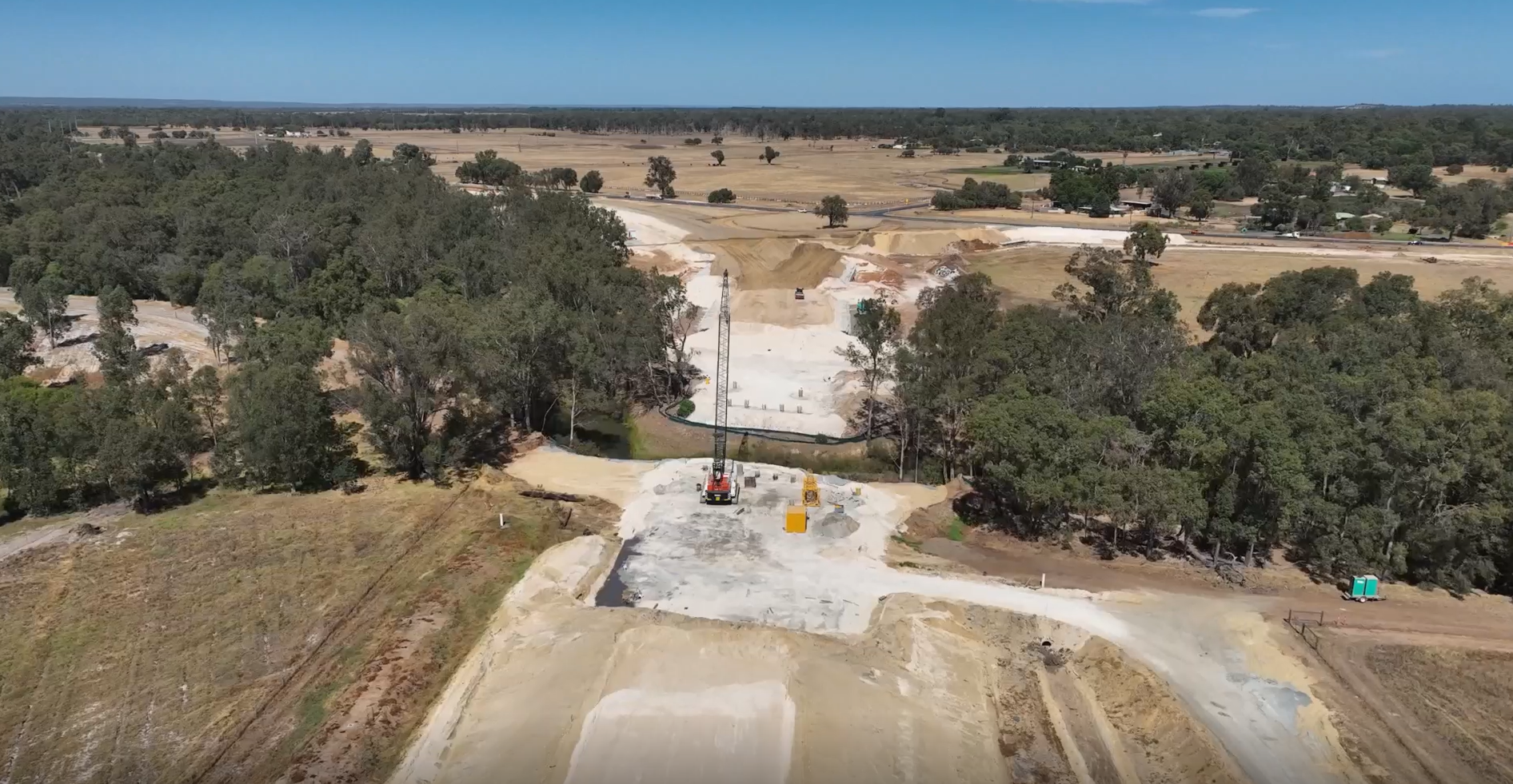It’s All Smiles and No More Piles On BORR
Bored piling has now been completed at the Preston River bridge on the Bunbury Outer Ring Road (BORR). This marks a significant project milestone as these 15 piles were the last of the piling work of its kind to be done across the entire alignment.
Published: 06 May 2024, Updated: 06 May 2024

Piling works are always important on a bridge but by the banks of a river, like the Preston River, it’s even more so. This work ensures that the soon-to-be-built bridge above it is supported by foundations sufficient to sustain its weight.
Generally, the soil by the banks of a river is not very competent. To find the right type of material within the substrate, the BORR team needed to drill into the ground and then pour the cylindrical concrete piles in to provide a solid structural foundation. From there comes the pile cap or ‘beam shelf’ which will hold the beams of the bridge on top of it in the coming months.
Initially, the Preston River bridge site presented some construction, environmental and Aboriginal heritage challenges to the BORR team. To ensure that challenges were addressed, various design options were investigated. This limited both the impact on the Preston River and surrounding habitat.
One of the design options utilised during the earthworks was the use of rock bags. These rock bags met the design life and requirements of the Preston Bridge, whilst being the least invasive technique for bridge and bank stability. During the installation, rock bags were placed strategically near the riverbed to provide scouring protection and support the toe of the newly built embankment.
The piles themselves are installed using a piling rig: a drilling apparatus that’s both large and heavy. It works by meticulously drilling a hole in the ground into which a sturdy cylindrical steel cage is inserted. The hole is then filled with concrete to ensure future bridge stability.
But getting the rig to the right spot to install the piles meant that another structure—called the piling pad—needed to be constructed. This pad needed to be able to withstand and support the weight of the rig, which the river-side soil beneath couldn’t do alone.
To ensure the right structural integrity of the piling pad, layers of reinforcement (made from a mesh of high-strength plastic called geogrid) were installed. As each layer was created, a carefully cut hole needed to be made so that when the rig arrived and began to install the piles, there would be a perfect cavity through which to drill without risking getting stuck on the mesh sides.
Next steps include the construction of the abutment concrete foundations at each end of the bridge, involving steel reinforcement fixing, formwork installation and concreting works. Then will come the backfill work and, soon after, the beam installation.
With this exciting milestone, all 123 bored piles across the entirety of the project have now been completed.
And with the piles all in the ground, there are smiles all round!
Page last reviewed: | Last updated: